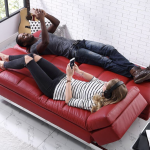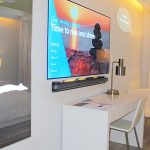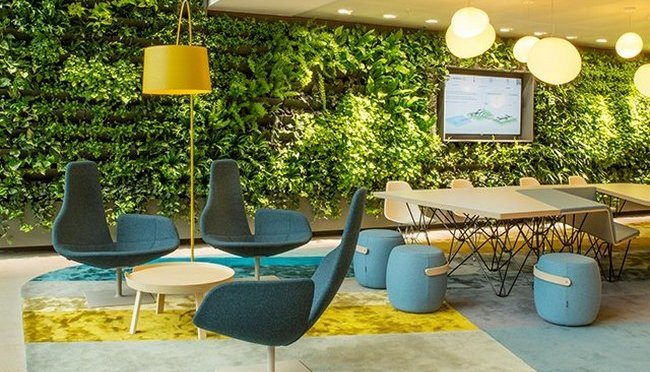
by Kelly | Aug 2, 2017 | Blog
Hospitality is always changing, and it’s hard to know which trends have real staying power and those that will be obsolete in a few years. From opening a new hotel, to choosing design elements and selecting technology, the choices managers and hoteliers make now will have a big impact on revenue in the future.
Here are four trends that are already proving to have a lasting impact.
Keep an eye on…
Mixed-Use Properties: In the future, more and more urban hotels will be part of larger complexes, taking up floors or even full towers of office buildings, apartment developments and shopping centers. Hoteliers are seeing this as a great opportunity to not only develop a new-build property with all the latest technology and perks (much easier than retrofitting), but to also provide guests with easy access to other businesses.
Perhaps most notably, earlier this month, the west coast got its tallest hotel when the InterContinental Los Angeles Downtown opened in the Wilshire Grand building, occupying the 31st to the 68th floors of the 73-story tower. This 889-room hotel shares the building with restaurants, a rooftop bar and more than 350,000 square feet of office space.
In Mexico, the city of Cuernavaca is slated to get its first mixed-use real estate development this fall. The Averanda complex will include commercial, residential, office and retail spaces, as well as two hotels with a total of 250 rooms.
Dual-Brand Hotels: Hotel companies are doubling down (or is it up?) on the number of brands they’ll have under one roof. In many cases, these projects include a midscale hotel and an extended stay property, catering to different audiences. Marriott already has combined Aloft/Element properties and SpringHill Suites/Residence Inns, while Hilton has joined together Hampton Inns and Homewood Suites under one roof. All of these hotels serve different demographics, but bring disparate guests together.
Depending on the layout of each property, these dual-branded hotels may share common lobbies and other front of the house facilities while having different types of guestrooms on separate sides of the building. Larger hotels might have separate lobbies for each brand, but share back of the house facilities. This not only helps cut down on the number of staff needed for each hotel, it also exposes guests to hotel brands they may not have otherwise considered.
Biophilic Design: “Biophilia” is a new concept referring to people’s connection to nature and the study of environments on psychological well-being. Architects and designers are taking note and incorporating plants, fountains and nature-oriented artwork throughout the property.
While bringing the outdoors indoors is beneficial, there is nothing like a good view. A recent study examined prices on Hotels.com, and found that guestrooms in urban properties with views of water or a major landmark can charge 12 percent more than the same kind of room without the view. For resorts located away from cities, guestrooms that overlook water can charge nearly 20 percent more than non-view rooms.
Hotels are also taking advantage of the rooftops, opening the space up to guests to make the most of the views and improve ROI. The Kimpton Solamar Hotel in San Diego recently revamped its rooftop lounge, the Upper East Bar, which offers a pool, views of the city and grassy areas with seating to let guests connect with nature while they socialize.
Technology: No matter how high-tech a hotel is, managers and owners should definitely invest in upgrading its technology now. All hotels should provide the highest wifi speed possible, and no matter what the bandwidth is, guests will be demanding more and more. Rooms should be outfitted with TVs that allow guests to watch their own content on sites such as Netflix and Amazon.
Voice-activated “smart” devices are also gaining ground in hospitality. Marriott is testing Amazon Alexa-powered devices as well as Apple’s Siri-powered options at some hotels. Going forward, guests at these properties will be able to turn on lights, close the drapes, adjust the room temperature, and even flip through TV channels with verbal commands. Best Western, meanwhile, is testing Amazon Dot devices for guests and employees of its hotels.
Guests won’t need to insert key-cards with a magnetic strip into a lock. Instead, hotels are using either RFID cards or apps that let guests open their doors with their phones. Hilton is already rolling out mobile check-in and using phones as keys, and other brands will be following suit.
Hotels that start incorporating some or all of these trends today will have an advantage in the future.
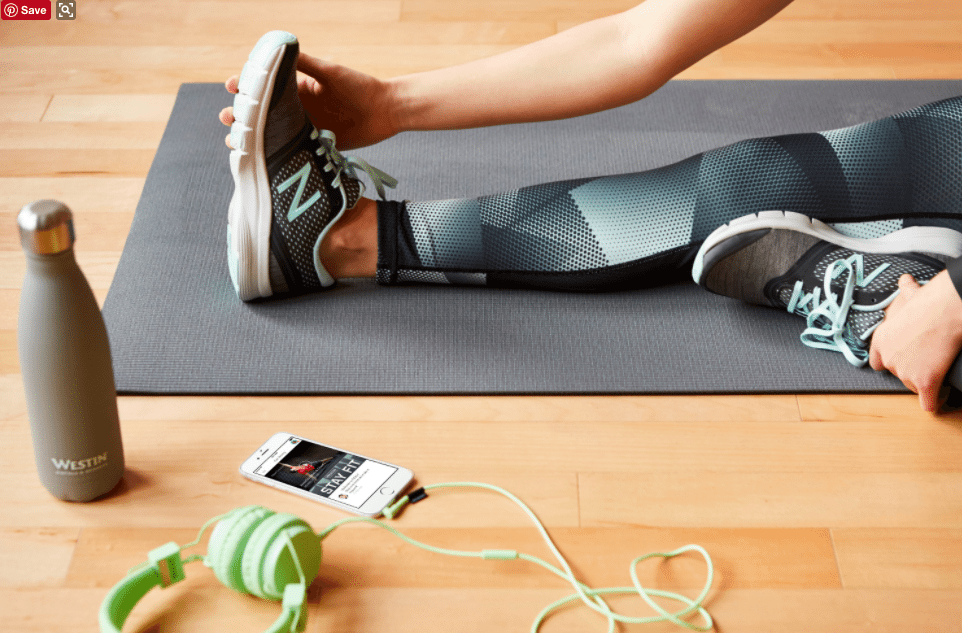
by Kelly | Jun 29, 2017 | Blog
Not so long ago, a hotel’s only connection to “wellness” was a fitness center with a treadmill, a stationary bike and some free weights. Today wellness in hotels is more than just the latest trend to hit the industry – it’s become a necessity for hotels to stay relevant and competitive in the current market.
Wellness has also evolved beyond fitness; it’s now about how a traveler’s personal well-being is impacted throughout their stay. Here we’ve crafted five ways to make your guests feel their best at your hotel – from food to mood, sleep to movement – even small changes can make a huge difference.
5. F&B
If your hotel offers any kind of food, from grab-and-go to a continental breakfast to a full-service restaurant, make sure healthy options are always available and prominently displayed. Welcome guests with a bowl of fresh fruit at the front desk and provide purified water in the common areas. Guests with dietary restrictions, or those who are simply trying to eat carefully, will appreciate vegetarian, gluten-free and high-protein food items. Try to include as much of these options as possible in your F&B programming. Small details like gluten-free baked goods can be what brings a guest back again.
4. Cleanliness
Cleanliness is next to happiness, and with guests more aware than ever of allergens and sensitivities, keeping guestrooms as clean as possible is critical. There are several steps you can take to make this easier. For example, replace carpet tiles with luxury, easy-to-clean vinyl tile (LVT), especially in high-traffic areas. AC Hotels by Marriott has wood flooring and elevated furniture in the guestrooms, vastly reducing dust and making it much easier to clean.
And then there are the linens. Hotel bed sheets are white for a reason. Health-conscious guests will already be concerned about sleeping on someone else’s sheets. Use washable materials for the top of the bed, wash everything in between each guest, and have a placard on the nightstand assuring guests that everything they sleep on has been sanitized prior to their arrival. They’ll feel much better.
3. Fitness
Exercising inside is fine, but when the weather is good, encourage guests to get outside and see your community. Find some good walking and jogging paths to recommend and offer maps when guests head out. If possible, get staff to organize guided walks or jogs around town. It can be a fun way for guests and the hotel team to connect.
2. Partnerships
Westin Hotels & Resorts has partnered with New Balance to loan shoes, apparel and accessories to hotel guests. During their stay, guests can borrow running shoes with brand new, disposable insoles for each use, as well as exercise clothing. 1 Hotel South Beach in Miami Beach partnered with Soul Cycle to create a 2,600-square-foot facility with a 54-bike studio, locker rooms and an apparel boutique.
On a smaller, more exclusive scale, San Francisco-based Hotel G has partnered with local artists to host invite-only DIY classes for guests to express their creativity. For starters, consider in-room massage services from a neighborhood business, yoga classes from a local instructor or even a painting course from an area emerging artist.
1. The Fitness Center
All right, yes, you should have a fitness center. It doesn’t need to be large and it doesn’t need to have a full gym’s worth of equipment, but even a small hotel can find space for some free weights, yoga mats and exercise balls.If you can’t find a room in your hotel for a fitness center, offer to bring portable exercise gear to the guestrooms upon demand. Guests will appreciate knowing that they can work out in their rooms whenever they need to.
When they’re healthy, they’ll be happy, and when they’re happy, they’ll come back.
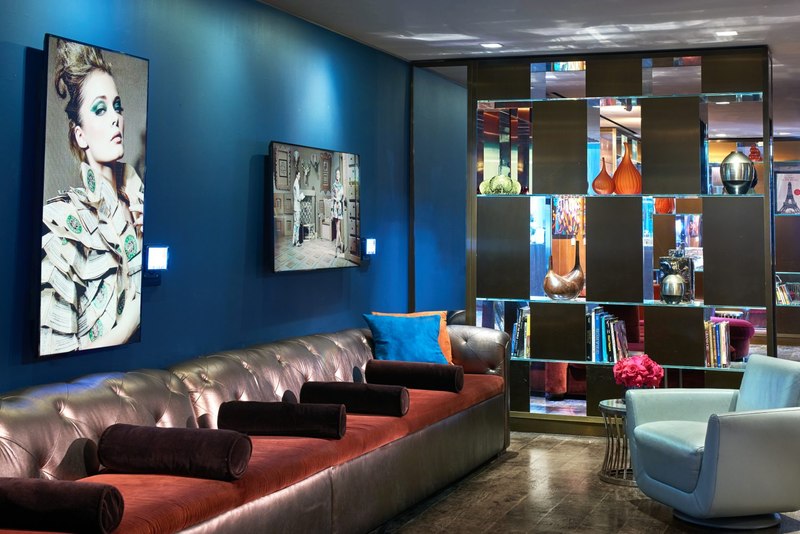
by Kelly | May 30, 2017 | Blog
With a seemingly endless and ever-changing array of technology available for hotels, how do you know what is worth your time and money? Fortunately, the wealth of options means that you can find the perfect fit for your hotel’s needs. After extensive research, here are a few of our top picks to help you connect with your guests before, during, and after their stays – and most importantly, keep them coming back.
Before the Stay
Get Social: It’s imperative for hotels to have a social media presence, especially on Facebook and Instagram. Potential guests will not only visit your website, but will also check out your social media platforms. Make sure that you have a cohesive look and feel, and all of the posts reflect the brand and voice of your hotel. Also, keep the content fresh by posting 3-4 times per week.
Go Mobile: More than 25% of all hotel bookings are made on smartphones and tablets, so if you don’t already have an app for your hotel, now is the time to get one. Not only is it an effective way to communicate with current and potential guests, it can be utilized to increase sales through sharing special promotions and hotel happenings.
During the Stay
Automate: Even a small hotel with a small staff can provide a great experience, especially if you use the latest technology to take some of the pressure off your team. Keypr is a system that automates many back-of-house and front-of-house jobs, freeing up your staff to focus on direct interaction with guests. The program can handle mobile check-in and provide keyless entry through its app, plus alert guests to promotions and provide on-demand services. It also provides management software to analyze what your guests want and need, and how to best anticipate any demands in advance.
Consider Robots: The Relay robot has been around for a few years, and more hotels are taking advantage of this technology. Designed by Savioke, the robot can deliver items to guest rooms, freeing up hotel staff to focus on other needs. Tessa Lau, chief technology officer at Savioke, has said that hotels also use the service as an upselling opportunity: One Residence Inn with a robot charges $2 per coffee delivery—a small price for a guest to pay for a unique experience, and an easy upsell for you. (If nothing else, think of the bragging rights—your guests will tell everyone they know about the hotel that delivered extra towels via robot!)
Take Art Interactive: Want to create a sense of place with cool, local art but don’t have the time or resources to make it happen? Problem solved: Daylighted, a San Francisco-based fine art consultancy, displays artwork from more than 1,000 artists on digital screens, allowing hotels to promote local artists and create an exclusive atmosphere. Art can be changed at anytime to tie into seasons, trends, party themes, and interior design, instantaneously adapting the ambiance. Even better, guests can use nearby tablets to learn more about the artists and purchase artwork for their own homes. Since the artwork can be changed daily (if not more often), regular guests will always have something new to see.
Turn Locals into Your Concierge: A small boutique hotel may not have the budget for a full-time concierge, but there are plenty of locals around who can offer tips and advice for your guests. Hello Scout is a virtual concierge service that connects guests with local residents via text message for advice on restaurants, shopping, top attractions, and anything else a guest would want to know about. After all, who knows more about a neighborhood than the people who live there?
After The Stay
Reach Out: Don’t forget to include functionality that reaches out to guests after their stay and keeps the conversation going. Your PMS or app can send emails to ask for feedback on the stay and alert guests of upcoming deals and events that will encourage them to book again. Pop-up or text messages on guests’ phone can keep them engaged, and can keep your hotel front-of-mind for their next trip.
Most importantly, figure out what technology is right for your hotel, and start taking advantage of it now. Your competitors most certainly are!

by Kelly | May 1, 2017 | Blog
By now, you’ve probably (repeatedly) seen the video of a passenger on a United Airlines flight being dragged off the plane by airport security. While blame can range from the passenger to the airline to the security team, the whole situation could have been avoided had United taken steps from the beginning to keep the customer as happy as possible. These steps are not exclusive to the airline industry, but apply to any business where the customer’s satisfaction takes priority – especially hospitality.
As consultant Peter Shankman has written, “every single time a business interacts with a customer, that business can either reinforce their relationship with the customer, or they can end it.” While no hotelier can make every guest perfectly happy all the time, taking the time to see things from the guest’s perspective can go a long way in improving the experience for everyone – from the hotel team to current guests to future guests.
Even if no one in the lobby is recording the desk agent’s conversation with a guest, a negative Yelp review can do a lot of damage. Instead, if your team is proactive and either prevents a problem or solves it as quickly as possible, positive word-of-mouth will only help future bookings.
To prevent problems before they begin, encourage your team to be proactive when asking guests what they need or like, and give them the authority to make quick decisions that will improve the guest experience. Take a page from The Ritz-Carlton handbook: this luxury company famously authorizes every employee at every property to spend thousands of the hotel’s dollars each day to make guests happy, no questions asked.
Even if you can’t authorize a front desk agent to spend thousands on each guest, you can authorize your team to do small things, like sending some fruit and bottled water to the guest’s room. It may only cost you a few dollars, but for a frustrated guest whose delayed flight caused her to miss dinner, it will mean the world and she will remember to tell her friends how your team helped her when she had a bad day.
Of course, things will go wrong, and that’s when your team has to be ready to make things right again, even if the problem wasn’t their fault. Maybe the housekeeper missed a spot. Maybe a faucet has started dripping. Maybe the reservation program double booked a room. When these problems are brought to the attention of your hotel staff, the staff should not get defensive. Instead, they need to apologize on behalf of the hotel and let the guest see that they are dealing with the problem.
When a guest loses his or her cool in the lobby, that’s when your staff really has to shine. They need to stay calm and they need to figure out a solution quickly before the guest can take to social media to complain. When a hotel’s team is attentive to guest needs, sympathetic to their concerns and authorized to handle problems before they escalate, you won’t have to worry about your property being pilloried on social media.
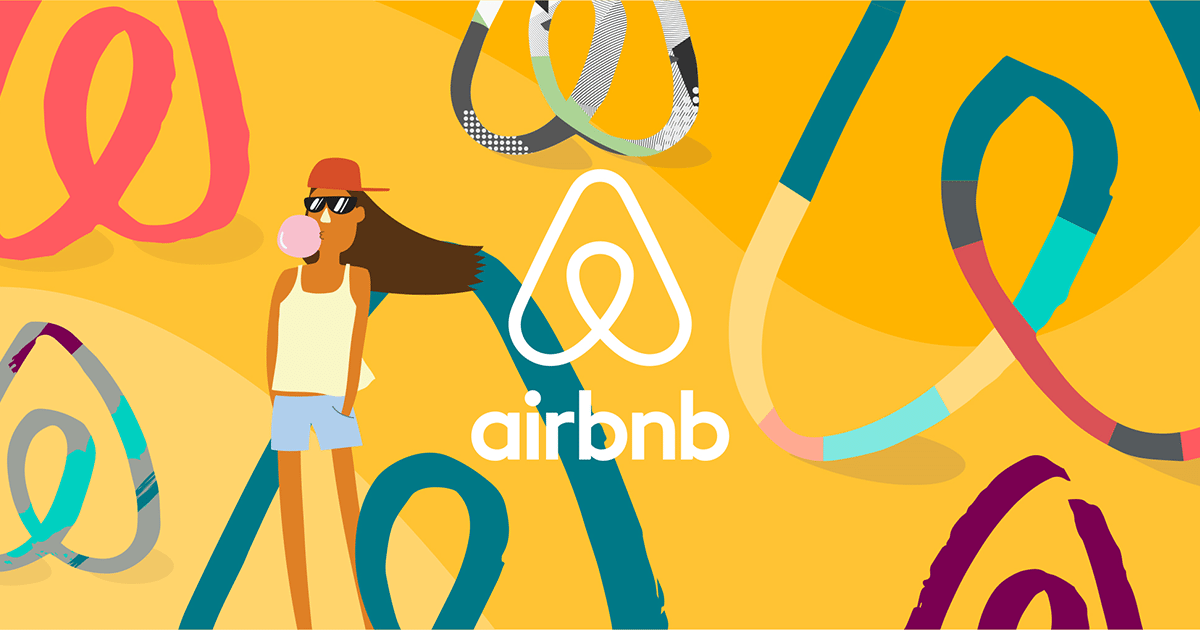
by | Apr 1, 2017 | Blog
Of course you’re concerned about the Airbnb effect on your hotel business – you should be. Home-sharing services are luring a key demographic away from traditional hotels and are vastly changing the hospitality industry. Competition is intensifying as Airbnb continues to up its game to reach an even broader audience. Earlier this month, it acquired the vacation rental company Luxury Retreats International to better compete in the high-end vacation rental market.
In response, hotel companies are now taking steps to keep up with home-sharing services. In the last few years alone, many major hotel corporations have announced new brands that are designed to compete with home-sharing services and hostels alike.
New Brands
The new brands leading this market all have several elements in common: they are affordable, the guestrooms are small, and the lobbies are designed as social hubs. They are geared for the millennial demographic, which prefers authenticity and local experiences, hence the appeal of staying in a local apartment rather than in a hotel.
Marriott brought its European-inspired Moxy brand to the United States last year when the Moxy Tempe opened in Arizona (the doors on the guestrooms reportedly have “Disturb” written on them), followed by the Moxy New Orleans a few months later. The Moxy San Francisco and the Moxy San Diego are both scheduled to open this year. Some of the brand’s biggest buzz is around the upcoming flagship hotel in New York City’s Times Square – one of five scheduled to open in Manhattan.
Hilton’s Tru brand, meanwhile, was announced last January amid much industry buzz and is slated to launch this year. Hotels are underway in Georgia, Pennsylvania, Mississippi, Texas, and Virginia among others. The lobbies of these hotels will be open-plan, but divided into zones to cater to different needs – eating, working and playing.
And in France, AccorHotels has announced its new Jo&Joe brand of hostel hotels, which (as a sign of the millennials’ love of socializing) will dedicate a third of each property’s footprint to “together space.” Even the guestrooms will be communal, set up for two to five people each. The first two properties are slated to open in Paris and Bordeaux by the end of 2018, and rooms will start at €25 per night.
How Can I Keep Up?
Whether your hotel is branded or independent, there are a variety of options to attract – and keep – a wide range a guests.
If you’re targeting millennials, make sure your hotel does not look like every other property in the area. Create “Instagrammable” spaces in and around the property – this could be as simple as artwork in the lobby or a signature drink in the bar. Give your millennial guests something to talk about with their peers.
On your website, promote your property with photos of people socializing in your lobby, and be sure to tout your special amenities. Do you offer a complimentary happy hour for guests at your lobby bar? Make sure they know about it, and add interest by featuring local craft beverages chosen by the hotel bartender and local drink experts.
With millennials, authenticity is key, and the ability to provide a unique cultural experience will generate word-of-mouth and positive online reviews. And if you want those online reviews and social media buzz, make sure your hotel offers free wifi and plenty of spaces to charge devices in public areas. The young generation is always connected, and your hotel will benefit if they can praise it in real time.
But Keep in Mind…
Don’t try to be all things to all guests. No one can make everyone happy, so pick a few demographics to target and cater to their needs. Millennials are important, but they aren’t the only demographic out there, and you can be successful if you serve other groups.
For example, if you want to attract business guests during the week and leisure guests on weekends, consider taking a cue from Holiday Inn’s recent H4 design scheme. These guestrooms have a king-sized bed that solo business travelers can use Monday through Friday, and a chaise lounge that turns into two twin beds for families to use on the weekends.
In other words, your hotel can compete with Airbnb by being authentic, knowing your target demographic, and offering opportunities for guests to socialize and share experiences. Once those three factors are in place, the rest becomes much easier to manage.








